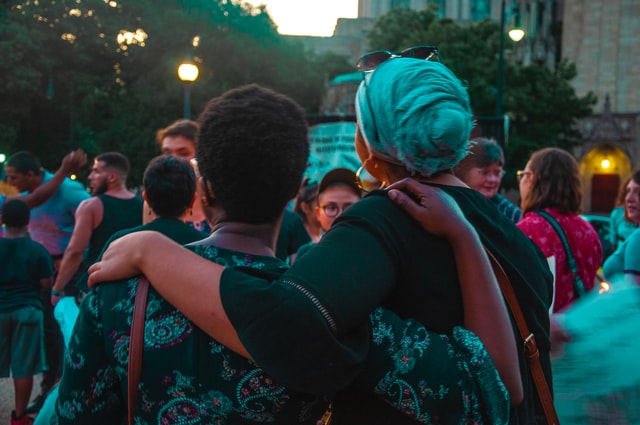Within the last week, there were public shootings in El Paso, Dayton, and right here in the Greater Birmingham Area. Twenty-one people were killed in an El Paso Walmart, nine people were killed in a popular nightlife district in downtown Dayton, and there was also a shooting in the parking deck of our local Hoover Riverchase Galleria. Shootings near or in playgrounds also took place recently in Chicago and Brooklyn.
Every child in America has likely been in a Walmart, a mall, or a playground. Children are also aware that their parents and other loved ones may go out occasionally for an evening of fun. So how should parents handle fear and other problems in their children following public shootings in places they or their loved ones often frequent?
How parents can help:
- Children look to their parents as a model for how to respond during difficult times. If you are visibly upset and anxious, your children will pick up cues that they are unsafe.
- Watch your children for signs that they are feeling unsafe. In general, you may see changes in appetite, behavior, or mood. Pre-school and early elementary children may regress in their skills, such as returning to bedwetting, being afraid to sleep alone, sucking their thumbs, or wanting to stay closer to parents than usual. Upper elementary and middle school children may be more specific in their concerns and want to avoid public places or school. Teenagers and high school students may withdraw, argue more often, or their grades may decline.
- Observe and wonder out loud. If you notice nonverbal signs of distress, bring it up with your children by telling them you notice some changes and you are wondering if it has anything to do with recent events. Don’t force them to talk about their concerns. But if you are fairly convinced that they have concerns about their safety, follow the recommendations listed below (especially sticking to a routine and monitoring exposure to violent media.)
- Normalize and validate your child’s emotional responses. Let your children know their response is natural and encourage them to express their feelings openly. You can “join” with their stated feelings but then set a boundary of reality. For example, “Yes, knowing that people were killed at Walmart is very scary, but it is a rare thing at Walmart and we will have a safety plan if we go to our local Walmart.”
- Let your children know you have thoughtfully considered how to keep them safe, and share the plan with them at their developmental level. Be specific to their concerns. If they are concerned about going to Walmart, share your plan for what to do at Walmart. If they are concerned about going to the mall, share your plan for what to do at the mall. If they are concerned about the playground, share your plan for the playground.
- Encourage your normal routine. If you normally go to the park on Tuesday afternoons, go ahead and go to the park. If your children express concern or a desire to avoid the park, this is the perfect opportunity for you to talk about the difference between a “possibility” of something scary happening and the “probability” of something scary happening. Then review your safety plan for attending the park. For example, “1) I will be keeping my eyes on you wherever you are playing, 2) I will be watching for any sign that it’s not safe, 3) Come get me if you anything you see or hear concerns you, 4) I have a special one-button app on my phone if we need to call the police, 5) If we hear a sudden loud noise, we will both drop down to the ground, etc.” Again, the detail you share about your plan should address their specific concerns only and match their developmental understanding.
- Monitor exposure to violent media. This includes protecting your children from repeated television discussions or re-broadcasts about the shooting tragedy. In addition, give violent video games, television shows, movies, or Youtube videos a time-out.
- Empower children to take action. Educate them about taking action by talking to school staff, writing letters to public officials, and reporting unusual observations to adults they trust. Let them know it’s okay to tell adults about safety concerns and that this does not make them a “snitch” or a “tattletale,” but someone who is helping their community
- Do not provide false hope or make promises you can’t keep. “I will never let anyone hurt you” is not something you can guarantee. But you CAN let them know that you are going to do your very best to keep them safe and take care of them.
- Parents don’t need to have all the answers. It’s okay to respond to your children’s questions with, “I don’t know.” They simply need to know that you care about their safety, are thinking about how best to protect them, and are open to looking for better answers or consulting professionals as needed.
- Most children calm down with some time and reassuring words. However, children who have a history of depression, special needs, trauma — or are aware someone they love has been through a similar tragedy — may take longer to readjust and may benefit from the help of a mental health professional.
Bottom Line: Children are incredibly resilient and can adjust to new realities as required. But they need the adults in their lives to model how to approach new challenges in a calm, reassuring, and thoughtful way







